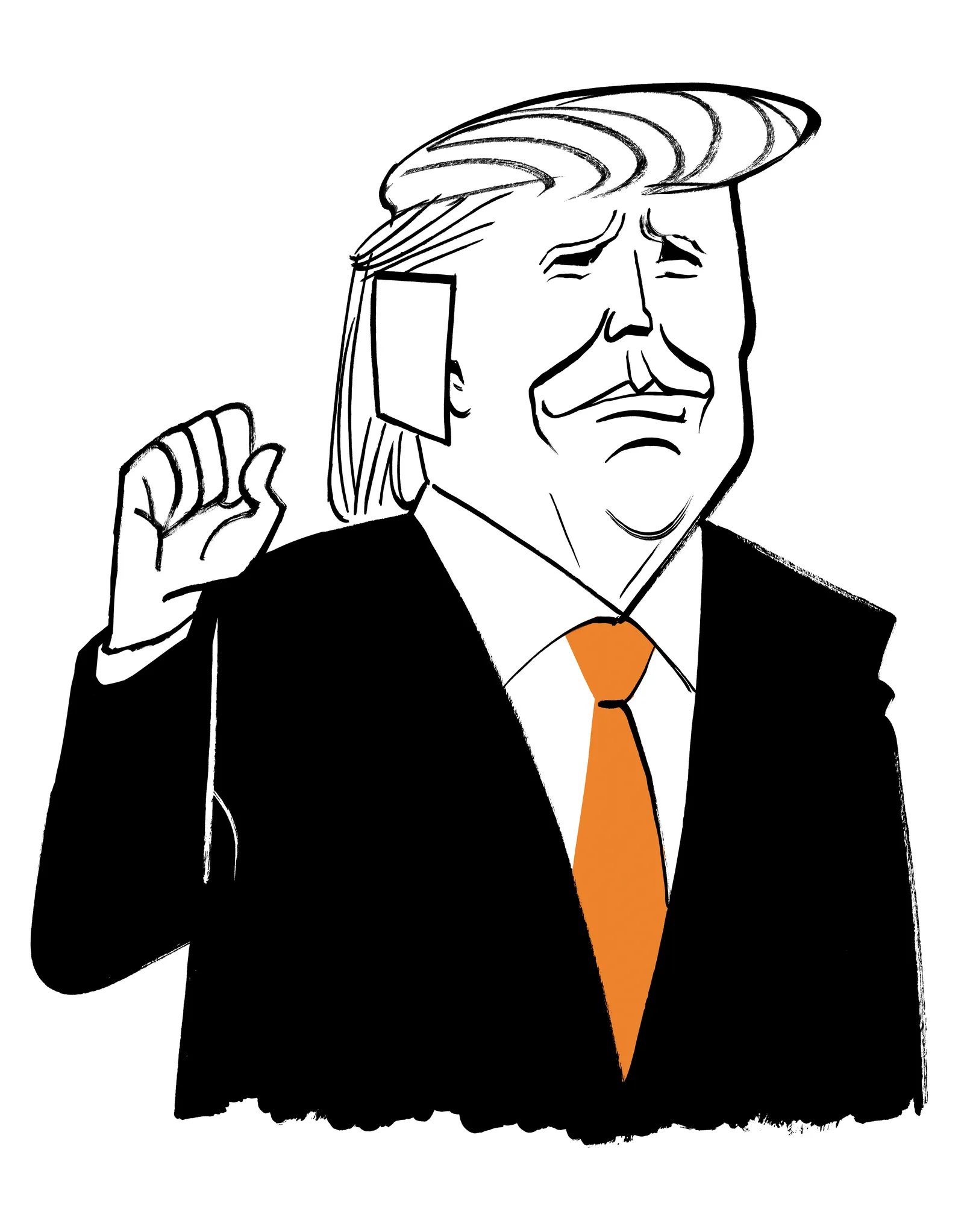Ear Injuries Through History

After the assassination attempt in Pennsylvania on July 13th, in which Donald Trump was wounded and one rally attendee, a firefighter named Corey Comperatore, was killed, Trump showed up to the Republican National Convention with a bandage covering his injured ear. Excitable empathic delegates soon began sporting their own. A new political symbol had been born: ears. Trump seemed to recognize it immediately. His first statement after the incident: “I was shot with a bullet that pierced the upper part of my right ear.” You typically hear of bullets “grazing,” but the circumstances allowed Trump to select a word with more lobe-and-cartilage associations. It works—piercing hurts. Grazing is for sheep.
Trump is fortunate in one respect: if you’re going to be shot, the ear is not the worst place. (“It felt like the world’s largest mosquito,” he told Robert F. Kennedy, Jr.) If offered a choice, few people would sacrifice a kneecap or a finger. A missing nose is too gruesome. A bloody toe is unimpressive. It’s true that ears can be messy. “They bleed more than any other part of the body, for whatever reason—the doctors told me that,” Trump said in his R.N.C. speech. “So we learned something.” But the defiant photograph, with blood trickling down Trump’s face—you can work with that. “A lot of people say it’s the most iconic photo they’ve ever seen,” Trump told the Post earlier this week. “They’re right, and I didn’t die. Usually you have to die to have an iconic picture.”
Until now, ears have never been a marquee appendage. It seems we have more words for the nose than the Inuit languages have for snow: schnoz, honker, beak, snout, smeller, conk, sniffer, snotlocker. Ears are only ever ears. There’s a Michael (the Nose) Mancuso and a Jackie (the Nose) D’Amico—but not a single auricularly monikered mafioso. As for eyes, what else needs to be said? According to the Times, Trump has taken to marvelling over J. D. Vance, “Those beautiful blue eyes.”
Trump’s ear may turn out to be the most famous in history. Jesus once regrew a man’s severed ear, but you mainly just hear about the time he healed the blind man. For decades, there was an ear-based subway ad campaign—“Torn earlobe?”—but everyone only remembers Dr. Zizmor. Ears get abused in “Reservoir Dogs,” “Black Caesar,” and “Pineapple Express,” and produce jokes that are a little on the nose. (Franco: “He got your ear, man!” Rogan: “HE GOT MY WHAT?”) Turgenev wrote a nice ear scene in “Fathers and Sons”; in a duel, a bullet whizzes by an ear, not unlike in Trump’s misadventure.
Then there’s van Gogh. At least he demonstrated proper ear-bandaging technique. Wrapping an ear, a bendy and floppy thing, is like putting a sweater on a fish. You need another structure as a splint. Van Gogh used his head—in his self-portrait, he wears his gauze like a babushka. Of course, that smushes the hair, which is presumably why Trump opted for a smaller, more awkward covering, like a panty liner, over just the ear, which looks as if someone forgot to snip off his sales tag.
Shakespeare had a thing for ears. The ghost of the king tells Hamlet that Claudius poisoned him. Where? “In the porches of my ears.” Strange choice! But “Hamlet” is all about ears. There are around twenty ear or hearing references in Act I alone. Ears are assailed, done violence, taken prisoner, infected, split, cleaved, and entered as if by daggers; they are attent, foolish, knowing, senseless, and too credent.
Historically, at least one kidnapping (John Paul Getty III’s) was escalated via a severed ear, and at least one war (the War of Jenkins’s Ear) was started over one. They’re a popular tool of punishment, the thing your parents might yank on when you’re in trouble. The Code of Hammurabi used the chopping off of ears as punishment for non-ear-related misbehavior—an eye for an eye, but an ear for something else. In Colonial America, ear cropping was often an add-on to pillorying. Reverend Samuel Peters, an early American historian, noted that in New Haven, Connecticut, men were required to keep their hair short. “Such persons as have lost their ears for heresy, and other wickedness, cannot conceal their misfortune and disgrace,” he explained. Peters’s evidence, alas, is flimsy.
What’s the prognosis for Trump’s ear? His injury appears to be similar to that of Evander Holyfield, who had the top of his ear gnawed off by Mike Tyson in 1997. It was pretty gross at the time, but Holyfield has recovered. Unless you looked closely, you wouldn’t notice anything amiss. Today, he and Tyson are selling weed gummies together, in the shape of ears.
Holyfield and Trump happen to be friendly. Did the boxer have any advice for the candidate? Calls made to Holyfield and his representatives this week went unanswered, or, potentially, unheard. ♦


